 |
| August 1, 2003 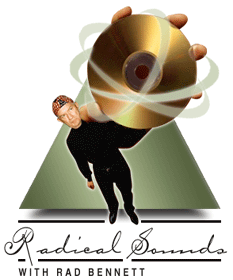 Radical
Sounds: Conversations with Mark Waldrep
Mark Waldrep is the founder,
president, and chief engineer of AIX Records, and, along with David Swartz and Michael
Stern, co-founder and chief engineer of Hi-Res Music. Wanting answers to some questions
that arose in putting together the June "Radical
Sounds," I recently had a conversation with him. Radical
Sounds: Conversations with Mark Waldrep
Mark Waldrep is the founder,
president, and chief engineer of AIX Records, and, along with David Swartz and Michael
Stern, co-founder and chief engineer of Hi-Res Music. Wanting answers to some questions
that arose in putting together the June "Radical
Sounds," I recently had a conversation with him.
Rad Bennett: In June, I reviewed a couple of the Hi-Res discs that you helped engineer. When I said that they were DVD-Audio discs that could be played on DVD-Video players, everyone came unstuck, thinking they couldn't be true DVD-Audio discs, but were merely DVD-Video discs that were coded to light up the DVD-Audio light. For the record, could you clarify the seeming contradiction. Mark Waldrep: There are several different DVD formats that were specified by various Working Groups and adopted by the larger DVD Forum back in the mid '90s. The first to emerge commercially was the DVD-Video specification, which was introduced in the spring of 1997 in the US. According to the specification, there are several audio-encoding options available to producers, depending on the number of channels and fidelity required. A valid disc must contain either of the following: 96kHz/24-bit PCM stereo, 48kHz/24-bit PCM stereo, and/or 1.0 through 5.1 Dolby Digital. Optionally, the specification also includes: SDDS and DTS 1.0 through 5.1, as long as there is a valid PCM or Dolby soundtrack. Some audiophile labels -- e.g., Chesky and Classic -- issued DVD-Video discs that took advantage of the high-resolution (96kHz/24-bit) stereo PCM capabilities. In most cases, these discs lacked video of any kind and used onscreen stills during playback. They became known as DADs (digital audio discs), even though there is nothing special about them and, in fact, they are not a specific format. They use the existing DVD-Video format (explained above). With the introduction of DVD-Audio about two years ago, producers were given additional audio options to accommodate pre-existing digital masters: those that might have been encoded at 44.1kHz. The palette of audio flavors that can exist on the DVD-Audio portion of a disc can be: 44.1/48/88.2/96kHz and 16/20/24-bit words up to 5.1 channels, and/or 176.4/192kHz and 16/20/24-bits words (stereo only). Note: MLP (Meridian Lossless Packing, a lossless algorithm) is required if you want to use 96/24 in 5.1 channels and is optional at the other rates -- to save memory space and thus create longer titles. The wrinkle comes in when you take into consideration that all DVD-Audio discs can include a DVD-Video "zone." This feature of the DVD-Audio specification allows producers to offer music videos and/or interviews, but what's more important, it means that a DVD-Video-compatible audio format can be added to a DVD-Audio disc. Most labels, including AIX Records and Hi-Res Music, place a DVD-Video-compatible soundtrack in the DVD-Video zone so all DVD players will play the titles. For a company putting out stereo programs at 96kHz/24 bits, the choice would be to redo what Chesky and Classic already did with DAD, or place the 96/24 stereo audio in the video zone of a DVD-Audio disc. That's what Hi-Res Music did. These are, in fact, DVD-Audio discs. There is nothing in the DVD-Audio portion of the disc, only a 96kHz/24-bit stream in the video so that the high resolution can be accessed by anyone owning a DVD player. I hope this is clear: We authored and delivered legitimate DVD-Audio discs with a DVD-Video "zone" that contains all of the content. RB: But are all DVD-Video players capable of 96kHz/24-bit reproduction? I know that in the early days of DVD-Video only certain players were. The others played only 48kHz/24-bit discs. These players would downsample the Hi-Res discs. What I am saying is that all DVD-Audio players, by design, will give you 96/24, but only most DVD-Video players will. So, though the discs can be played on all DVD players, they might not be sampled at 96kHz by all of them. MW: The DVD-Video specification has included the capability to play 96kHz/24-bit stereo PCM audio from the introduction of the format back in March of 1997. A hardware manufacturer cannot put the DVD logo on their product if it is unable to deliver high-resolution PCM audio. However, you're right about the shortcuts that a few manufacturers took in regards to their implementation of "96kHz/24-bit" playback. The cheapest machines used digital-to-analog converters that reduced the sample rate to 48kHz on the analog outputs by taking every other word. If the player has a digital output (optical or coax), the full 96kHz/24-bit stream can be accessed. The vast majority of DVD-Video players include true 96kHz/24-bit stereo PCM playback through both the analog and digital outputs of their decks. The requirement is in the specification, as it is with a DVD-Audio machine. RB: The Hi-Res discs are labeled as "DVD-Audio/Video," as are your own AIX discs. Is that designation allowable? And while we are at it, I notice that you also label AIX discs as "Tribrid." What’s up with that? Don’t you think all the different labels and terms might be confusing to the consumer? MW: The designation for "hybrid" DVD-Audio and DVD-Video discs is allowable. In the case of Hi-Res Music, the inclusion of DVD-Video was done so that owners of standard DVD players would know that it would play in their hardware, through the use of the DVD-Video zone discussed earlier. AIX Records, on the other hand, is producing discs that are literally DVD-Audio/Video in their manufacturing. One side of the two-sided disc is prepared according to the DVD-Audio specification and the other is authored as a DVD-Video disc. As far as I know, no one else is creating discs of this type. We do it because there is so much material on each product: alternate audio mixes, video, bonus tracks, et cetera. As for the use of the "Tribrid" designation and logo, I include it to make it clear that all AIX Records titles contain media accessible from DVD-Audio, DVD-Video, and DVD-ROM machines. There are high-resolution 5.1-channel surround tracks, Dolby Digital/DTS tracks, and computer files such as Web connectivity and printable sheet music. There is undoubtedly confusion in the marketplace about the DVD-Audio format. Some of it comes from poor reporting by the press -- e.g., the insistence that a monitor is required to access the music, which is blatantly not true! -- some from the SACD camp, and admittedly some from within our own DVD-Audio community. At least for AIX Records products, a consumer simply puts the disc into the player of his or her choice and gets the experience expected, whether audio only or audio with video. We’ll continue this discussion next month. For now, here are four titles that made the search for the perfect recording worthwhile this month.
The celebration of Salzburg’s 1100th anniversary as a center of Christianity was a big deal. Held in 1682, it had been in the planning stages for many years before that. A great mass and motet in 53 parts was planned -- what has become known as the Missa Salisburgensis. But, as is usual with events such as this, what looked firm in planning changed in practice. No one is 100% certain that Heinrich Ignaz Franz von Biber wrote this gigantic piece. Andreas Hofer, Biber’s predecessor as Court Kapellmeister to the Archbishop of Salzburg, might have written it, and several additional hands might have been involved. What is beyond doubt is that the work is a glorious musical spectacular that has been fully realized in this magnificent recording. The piece seems made for multichannel, featuring six different choirs (some instrumental, some vocal), as well as trumpet choirs in the distant parts of the cathedral. The SACD was recorded in Romsey at the Abbey Church of Saints Mary and Ethelflaeda. It sounds like a vast space with a huge reverberation time, a delay that is conveyed with seeming accuracy by the recording. The SACD stereo mix pales by comparison, and the CD layer is only for those who are still waiting to equip for SACD listening. Instead of remixing works that are meant to occupy a front stage, it would be wonderful to unearth more compositions like this one -- works originally intended to be heard in the round. Gabrieli, anyone?
This disc, one of Chandos’ initial SACD releases, comprises recordings remixed from 1991 sessions. Britten’s War Requiem would seem to be a natural for multichannel presentation. In addition to soprano soloists, huge chorus, and orchestra, it employs a boys’ chorus, as well as tenor and baritone soloists accompanied by a separate chamber orchestra. The music for these male solo singers is set to the poetry of Wilfred Owen, a World War I pilot killed in action, whereas the remaining forces sing the standard Latin Requiem text. Had these sessions been originally planned for 5.1 recording, the boys’ chorus would no doubt have been in the rear, perhaps alongside the tenor and baritone soloists. But this SACD is remixed from a stereo recording, and places all the performers up front, though the chamber orchestra and boys’ chorus do sound as if they were placed far behind the main forces. The sparing use of surround is more than compensated for by sound that is lucid, yet rich and warm. In fact, most of the Chandos multichannel SACDs I have heard so far show admirable restraint in using the rear channels, which are employed just enough to give a proper sense of space. In speaking of sound, I forgot to mention the performances, which are second only to Britten’s own recordings on Decca.
The songs of Josť Marin give us a vivid picture of the Spanish royal court at Madrid in the late 17th century. It is period music of the idle rich, delving only into the happier aspects of love and life. The performances and recording are nothing short of exquisite. The soprano is placed center and to the fore, the guitar slightly behind, and the various percussion and castanet sounds emerge with remarkable presence from various points within the soundstage. All of the music is rendered in the highest fidelity. Delicate music of this sort benefits greatly from the higher resolution that SACD can offer. Anyone who recklessly writes off two-channel SACD ought to hear this disc.
Lindsay Buckingham and Stevie Nicks receive equal time on this generously filled disc. He’s still walking on the dark, cautionary side of life, while she’s still singing of love, romance, rejection, and mystery. Each has matured and honed his or her craft to a science. If anything is missing in this excellent set, it might be spontaneity. Mick Fleetwood’s drums are steady as an unusually imaginative rock. The sound is a bit leaner than we have gotten from this band in the past, no doubt due to the absence of Christine McVey. But it is a tight sound and a unanimous one, and Nicks has become one with those soulful folk-like melodies she intones in songs such as "Smile at You" and "Run Through the Garden." The recorded sound seems beautifully simple, even when actually complex. The sessions never sound overproduced, and the surround is used sparingly, yet to great effect. There are no extras. Though printed texts are found in the booklet accompanying the disc, there are no onscreen lyrics or music videos, merely a playlist. ...Rad Bennett
Ultra Audio is part of the SoundStage! Network. |
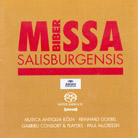 Biber: Missa Salisburgensis
Biber: Missa Salisburgensis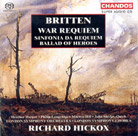 Britten: War Requiem, Sinfonia
da Requiem, Ballad of Heroes
Britten: War Requiem, Sinfonia
da Requiem, Ballad of Heroes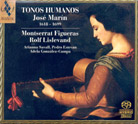 Josť Marin: Tonos Humanos
Josť Marin: Tonos Humanos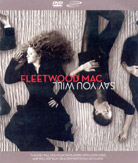 Fleetwood Mac: Say You
Will
Fleetwood Mac: Say You
Will